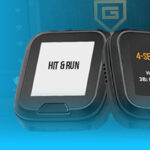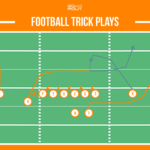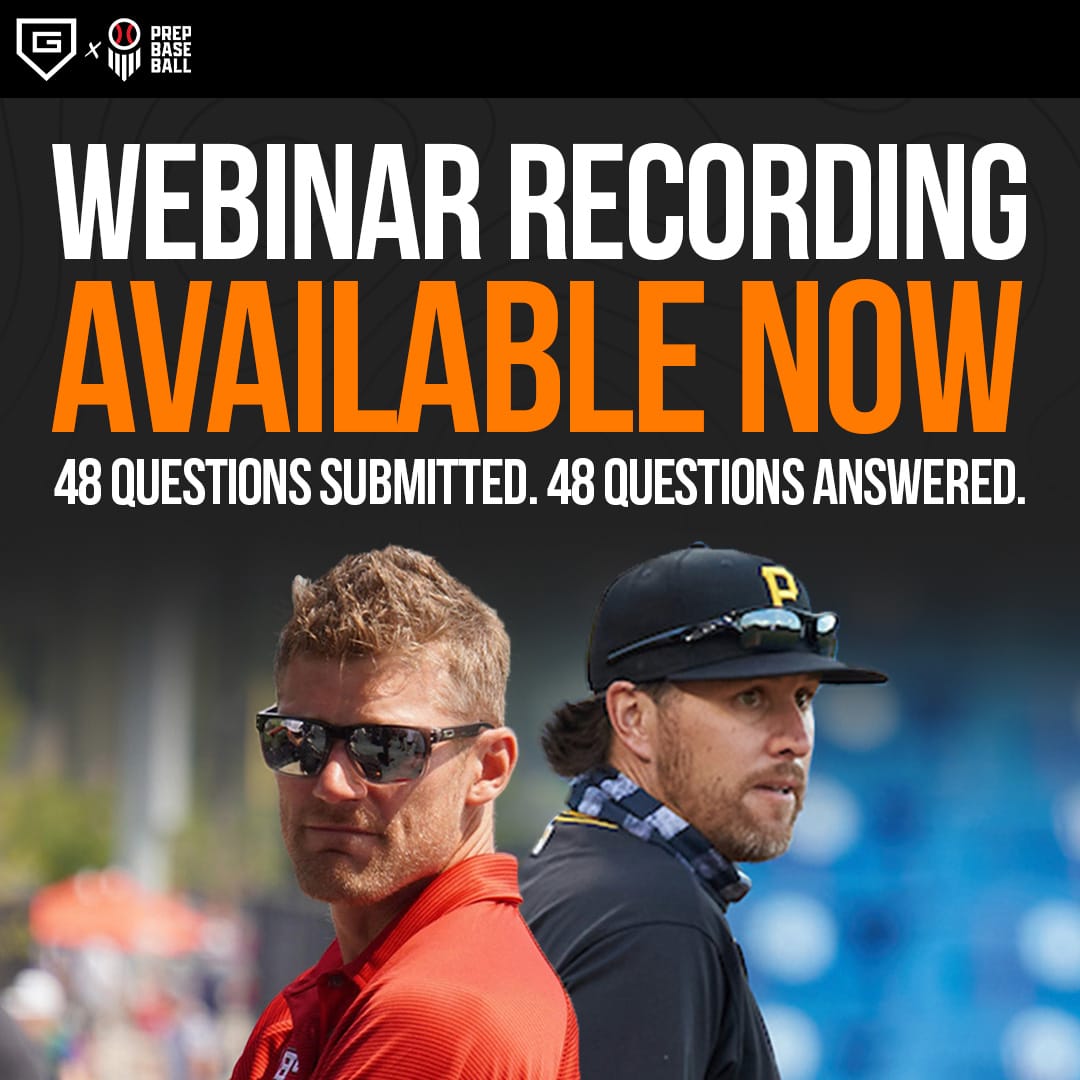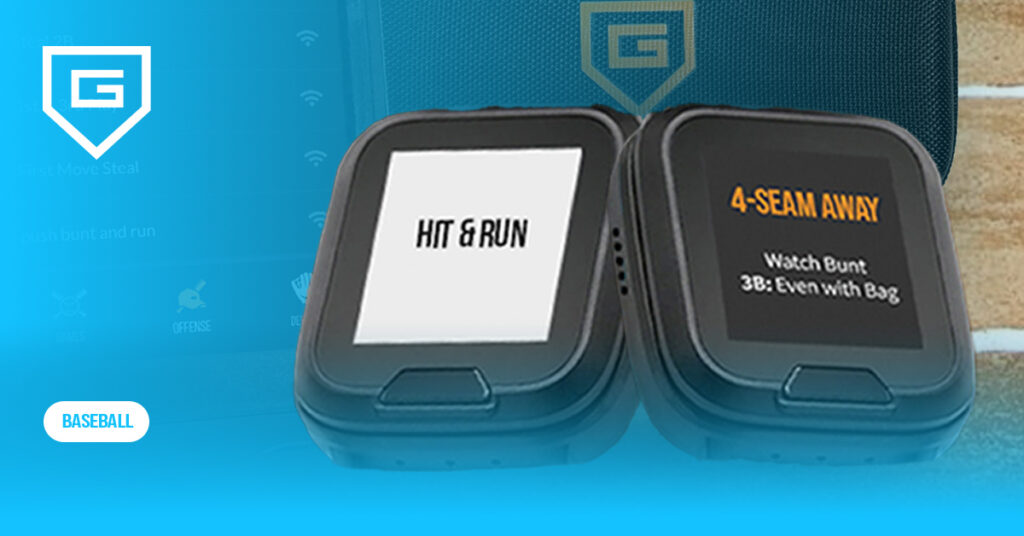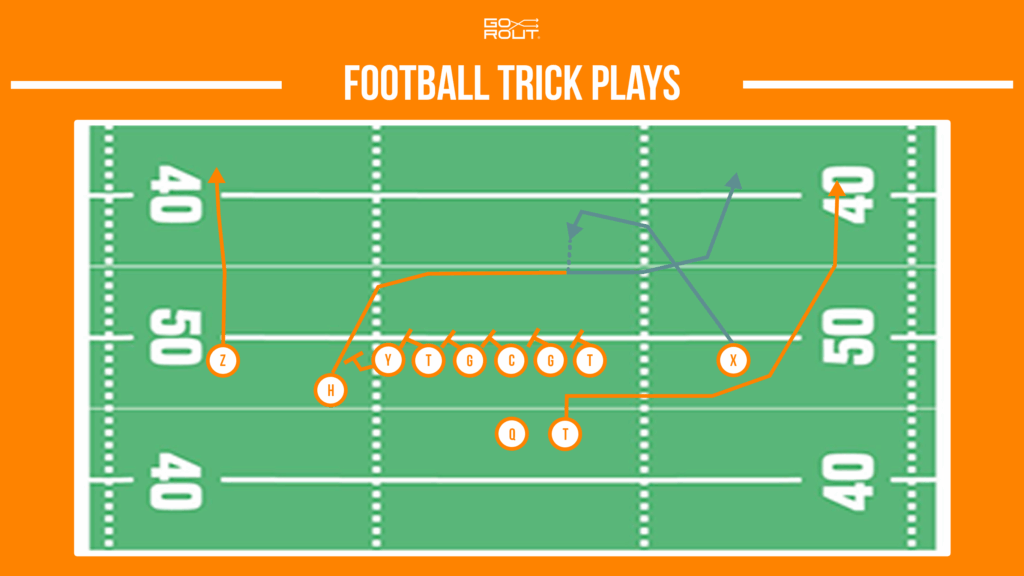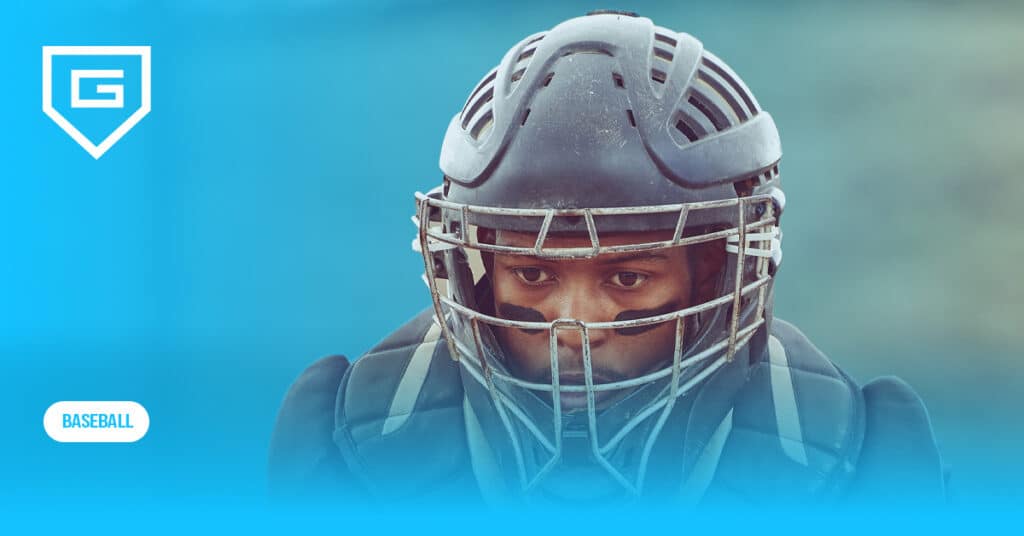Baseball Pitch Calling System: How to Choose the Best One in 2025
Reading Time: 11 minutes
Reading Time: 11 minutes
Choosing the right baseball pitch calling system can impact your team in 2025.
The best baseball pitch calling system should give you fast, secure, and clear communication between coaches and players, making your team more efficient while cutting down the risk of sign-stealing.
In this article, we’ll talk about how these devices fit into the broader trend of sports technology, how they stack up against old-school methods, what to look for in a coach to player communication system, and the rules governing high school, college, and MLB.
Key Takeaways
- Baseball pitch calling systems help you share signals faster and with less confusion.
- You can pick from wristbands, audio devices, watches, or tablet-based tools.
- Electronic systems lower the risk of sign-stealing and miscommunication.
- Durability, battery life, and ease of use are important for game day success.
- Double-check your league’s rules before using tech during games.
- Major baseball organizations approve top brands like GoRout Diamond for in-game use.
- Learning both electronic and traditional methods gives your team flexibility.
- The price varies by features, so choose a system that fits your budget and team’s goals.
GoRout Diamond is a game-changer for fast, secure pitch call delivery and works anywhere—even if there is no Wi-Fi. Your players get all the signals and strategy updates instantly, displayed clearly and protected from sign-stealing.
If you want to boost your team’s communication and performance, get a custom quote or visit the web shop.
What Is A Baseball Pitch Calling System?
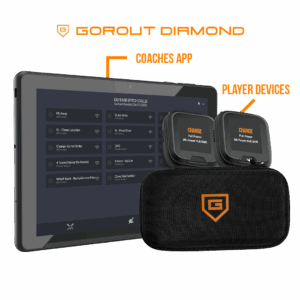
A baseball pitch calling system is technology that lets coaches send pitch calls and defensive plays, such as defensive shifts, to catchers and other players through electronic wearable devices.
It makes signals clear, fast, and secure, so your team can respond without confusion or delay.
The main goal is to make sure everyone gets each call right away and to deliver signals quickly and accurately. It reduces sign stealing and errors, keeping the game moving.
The system also prevents the batter from overhearing signals, ensuring privacy and security during critical moments.
Teams like these systems because they let them focus on strategy, knowing every pitch is called and communicated securely, and every position or strategy change gets delivered quickly and correctly.
Core components
| Component | Description |
| Coach controller | A handheld or app-based device that sends pitch calls and plays to your team. You can assign specific functions or roles to different devices for better control and customization. |
| Player receivers | Wearable receivers, usually a watch or earpiece, worn by the catcher and sometimes other players. |
| Secure technology | Encrypted signals keep your team’s strategies private and safe from opponents. |
| Optional add-ons | Some systems include extra player receivers, team-wide updates, or analytics integration. |
Modern electronic pitch calling systems are part of a growing trend in using baseball communication devices for more accuracy, privacy, and faster decisions for each team.
Baseball Pitch Calling Systems Vs. Traditional Methods
Switching from traditional hand signals to modern baseball pitch calling systems can really change how you handle game strategy and signals from the dugout.
However, whether electronic systems are permitted depends on the league and the sport’s governing bodies.
Some leagues only allow traditional methods, while others have permitted electronic systems under specific rules to keep the integrity and compliance within the sport.
Use the table below to compare key features.
| Feature | Electronic System | Traditional Method |
| Communication speed | Instant | Slower |
| Sign stealing risk | Very low | High |
| Weather impact | Weather-resistant | Vulnerable |
| Learning curve | Moderate | Low to moderate |
| Error rate | Low | Medium |
| Mound visits | Reduced | More frequent |
| Game duration | Shorter | Can be longer |
| Setup time | Longer | Very quick |
| Cost | Higher | Low |
Electronic systems keep your pitching signs secret, lower mound visits, and speed up games. You’ll need some setup and training time.
Traditional hand signals are cheap and simple, but come with a higher risk of errors and sign stealing.
What Are The Benefits Of A Baseball Pitch Calling System?

A baseball pitch calling system helps you communicate faster and reduce mistakes, while supporting player development during practice and games.
Here are some key advantages.
Faster game pace
Pitch calling systems speed up play by cutting down the time between pitches. Quicker communication means fewer delays, less confusion, and a better game rhythm—which makes the experience more enjoyable for everyone.
Improved sign security
Encrypted signals prevent sign stealing, giving your team a strategic advantage. Players no longer have to memorize complex codes or worry about tipping pitches.
Mental confidence
Clear, reliable signals reduce stress and help players stay focused in high-pressure situations. Knowing communication won’t break down boosts confidence across the team.
Reliable all year
These systems perform in any weather—rain, snow, heat, or under bright stadium lights—so your team can rely on them throughout the season.
Easy for newcomers
This tech is easy to learn. That means more time for practicing and executing plays instead of figuring out hand signals.
With everyone on the same page, pitch calling tech boosts teamwork and strategy. Your squad can focus on performing better, which means stronger play as the season rolls on.
What Are The Key Features Of Baseball Pitch Calling Systems?
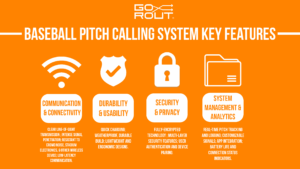
The right baseball pitch calling system keeps your team connected, secure, and ready for whatever the game throws at you.
The best systems let you communicate quickly, track every call, and stay reliable through tough games and practices.
Look for the following features.
Communication and connectivity
These systems have clear line-of-sight transmission, so signals get across the entire field. Intense signal penetration reaches dugouts, bullpens, and every play zone, so you stay connected all game long.
They are resistant to crowd noise, stadium electronics and other wireless devices. With low-latency communication, pitch calls and player responses happen instantly – the game stays fast and fluid.
Durability and usability
These baseball signal systems feature quick charging, so you don’t have to spend time between games.
Their weatherproof build ensures you can use them in the rain, extreme heat, or cold. They can take a beating – impact-resistant, dustproof, and dirtproof – perfect for indoor and outdoor play.
Players also get lightweight and ergonomic designs that are easy to clean with standard disinfectant wipes, so they’re comfortable and hygiene compliant.
Security and privacy
This fully encrypted technology protects pitch calls and in-game strategies from interception. Multi-layer security features block hacking attempts and prevent unauthorized access.
User authentication and device pairing ensure that only authorized coaches and players are connected, so your team’s communication is secure and private.
System management and analytics
Modern systems have real-time pitch tracking and logging, allowing coaches to analyze practices and games.
Customizable signals—via audio, visual, or vibration alerts—let teams adapt the system to their workflow.
App integration with a user-friendly design lets you review pitch history, spot trends, and tweak strategies.
Battery life and connection status indicators also allow for proactive system management, so you’re never caught off guard during critical moments.
Baseball Pitch Calling System Regulatory Compliance By League

Choosing a baseball pitch calling system means you’ll need to pay attention to league rules. Different leagues have their requirements for what’s legal, who can use receivers, and how devices work during games.
MLB
Since 2022, Major League Baseball has permitted the use of electronic pitch calling devices. Pitchers, catchers, and select fielders may receive signals using approved equipment, with strict team limits to ensure secure and fast communication throughout games.
NCAA (College)
All college baseball and softball divisions permit electronic pitch calling, but rules differ by conference. Most teams use audio receivers to keep players focused. Always check conference or league rules before using these systems, as details can vary by school or event.
NFHS rules (High School)
High school teams can use electronic pitch calling if their state association approves it. Usually, only the catcher receives signals, and states have different rules about pitcher use. Confirm your local association’s policy before using any device.
Youth and travel baseball
Policies for younger players and tournaments differ widely. Many prohibit electronics altogether or require tournament approval beforehand.
How To Choose The Right Baseball Pitch Calling System
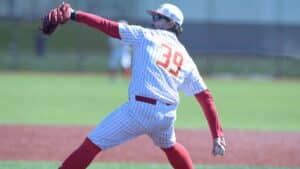
When you’re picking a baseball pitch calling system, start by thinking about your team’s demands.
Ask yourself:
- What level of play are you coaching—youth, high school, college, or professional?
- What’s your budget? Entry-level options are cheaper, but premium systems offer more.
- How many players need receivers—just the catcher, or also the pitcher and other positions?
- What weather do you play in most—hot, cold, rainy?
Make a checklist of the features that matter most.
| Feature | Why It Matters |
| Wide Range | Reaches all players on the field |
| Battery Life | Lasts through doubleheaders |
| Durability | Handles tough weather and impacts |
| Security | Keeps calls safe from opponents |
Make sure the system is allowed under your league’s rules. It’s also smart to pick something that can grow with your team if your needs change.
If you can, try out the devices before buying. Consider how easy they are to set up and what kind of support the company provides after the sale.
Talk with players and coaches to see if it feels comfortable and easy for everyone.
“We have been thrilled with the addition of GoRout to our program. It has streamlined our in-game communication with our players and been extremely easy to use on our end as coaches. Simple setup and easy delivery. We would highly recommend GoRout to anyone.” – Coach Adam Core, Lindenwood University Baseball
How To Implement A Baseball Pitch Calling System

As soon as your equipment arrives, lay out all the pieces. Check for the coach transmitter, player receivers, charging station, cables, and your quick-start guide.
Give each device a full charge—this usually takes two to three hours. Once charged, power up every unit and test all the connections.
Walk the field and send signals from the transmitter to every receiver. Make sure everything works at different distances.
Train coaches on the transmitter. Learn to create and save pitch sequences, operate the device, and fix common issues.
Catchers should practice wearing, adjusting, and maintaining their receivers. They’ll need to recognize signals quickly and confirm them.
Move on to team drills. Start with simple signal recognition, then progress to bullpen sessions and scrimmages.
On game days, check every battery and connection before warmups. Always have a backup plan—like hand signals—if the tech fails.
Use your sports coaching technology to keep calls smooth, but stay ready to switch methods if needed.
After games, power down the devices, clean them, and put them in the charging station. Keeping everything in a case protects your gear for next time.
Baseball Pitch Calling System Pricing & Package Options
For 2025, you’ll find a wide price range for baseball pitch calling systems to fit your team’s budget. Some offer starter packs with everything for pitcher and catcher communication.
Common package contents include:
- Coach transmitter
- Receiver for catcher or pitcher
- Earpiece, ear tube or wristband
- Charging gear
- Carrying case
Prices depend on how many devices, features, and warranties you get.
Lower-cost options work well for small teams. Premium systems, such as GoRout Diamond, offer more benefits for competitive programs.
Most full kits cost between $400 and $1,500, which is a one-time payment. Usually, there’s no monthly subscription after you buy.
Check each company’s website for the latest packages and custom options. Some let you add more units or accessories as needed.
If you want flexibility, some companies let you rent equipment for a season or tournament. That’s handy if you want to try before buying.
Look for systems with at least a one- or two-year warranty for peace of mind. Providers usually list their policy online, so you can compare before you decide.
Meet GoRout Diamond: The Best Baseball Pitch Calling System
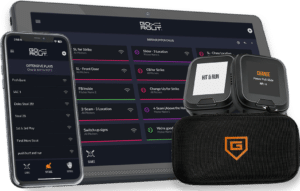
GoRout Diamond brings together fast tech, reliable communication, and user-friendly features. Coaches and players can perform with more confidence. Teams at all levels have seen real benefits from its flexible setup.
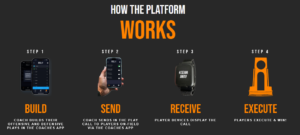
How it works for coaches
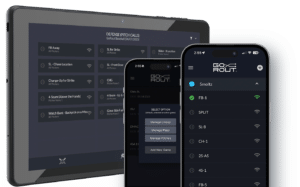
GoRout Diamond lets coaches make decisions fast and direct. With one button, you send pitch calls, defensive signals, and strategy notes to players—no hand signs or paper needed.
The interface is simple, so you spend less time learning and more time coaching. GoRout Diamond reaches just one player or the whole team instantly.
The system uses a secure cellular connection, so you never need WiFi or extra routers in the field. You can customize signals and adjust call types for different situations.
The devices are ready out of the box. The setup is quick for practice or games. For big teams, you can add more devices easily.
How it works for players
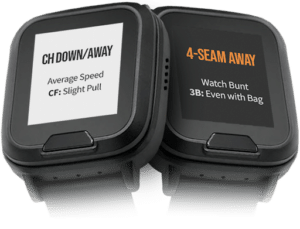
Players get clear, instant instructions through wearable devices. Each unit displays play info that’s easy to see in any lighting—sun, stadium lights, or clouds. No more confusion about signals or missed plays.
The weather-resistant build means you can use it in heat, rain, or snow. Controls let you switch display modes fast, so you always see your next move.
GoRout sends the right message to the right position. Each player knows their role, and the simple design means less time learning tech and more time playing.
Key reasons to implement GoRout Diamond into practices and games
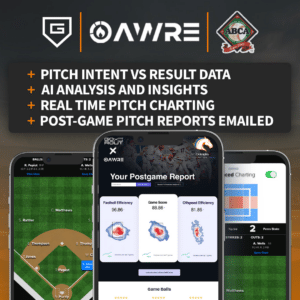
GoRout Diamond gives you more than just speed and security. Here’s how:
- Encrypted communication: All GoRout Diamond transmissions are fully encrypted and include a four-way privacy screen to safeguard team strategy and prevent unauthorized viewing of signals.
- AI‑powered analytics: The platform delivers advanced insights—such as pitch intent vs. result comparisons, real-time pitch charting, and analysis of game-day patterns.
- Long battery life: Devices offer at least 12 hours of continuous use on a single charge and can fully recharge in under an hour, making them ideal for long games or doubleheaders.
- Customizable packages: GoRout packages start with a single NFHS-approved coach-to-catcher device and can scale to full-team setups. Options are flexible, budget-conscious, and tailored to any program size.
- Warranty coverage: Every device comes with a 100% full-coverage warranty against breakage—though it does not cover lost or stolen units—ensuring long-term reliability.
- NCAA, High School & Youth approved: GoRout Diamond is approved for in‑game use across NCAA, NFHS-level high school, and youth programs (where permitted), allowing multi-level adoption within official rules.
This digital system saves time and reduces errors, helping you avoid miscommunication when it matters most.
Testimonials and case studies are available for those interested in learning more about its impact.
Want to boost your team’s performance with GoRout Diamond?
Just ask for a quote or visit the online shop.
Conclusion About Baseball Pitch Calling System
Picking the right pitch calling system for your baseball team can really level up how you play, communicate, and compete out on the field.
It all comes down to what your team needs, how much you want to spend, and what the league requires.
Think about these key factors:
- Ease of use: Is the device simple for everyone?
- Security: Will your signals be private and hard to steal?
- Durability: Will it last through a tough season?
Today’s best systems, like the GoRout Diamond, offer real-time signals, easy setup, and strong privacy to keep your team’s game plan safe from opponents.
GoRout is approved for in-game use at the high school and college levels and does not require Wi-Fi, making it reliable in all conditions.
You can improve practice, speed up gameplay, and develop smarter players by moving from outdated hand signals to trusted pitch-calling tech.
If you want a secure and user-friendly solution, GoRout Diamond stands out as the top choice in 2025.
Visit the webshop or get a quote to see how you can take your team’s communication to the next level.
FAQs About Baseball Pitch Calling Systems
What is the best way to call pitches in baseball?
Using a pitch-calling device, such as a wristband or watch, makes pitch calling faster and reduces mistakes. Many teams use electronic pitch-calling watches, allowing coaches to send signals securely in real-time. It’s simple, quick, and keeps the game moving.
How do baseball announcers know what type of pitch?
Announcers usually spot pitches by watching speed, spin, and pitcher habits. Sometimes, they get game data from the field. Many broadcasters use technology and analytics to pick out pitch types and locations during live games, which helps their play-by-play.
What are the main differences between pitch-calling systems like wristbands and tablets?
Wristbands are compact, wearable devices players wear during games to get quick pitch/play signals.
Tablets, on the other hand, are larger, coach-held devices for sending these pitch calls.
How do encrypted wireless signals enhance security in modern baseball pitch calling?
Encrypted wireless signals keep pitch calls private. You don’t have to stress about the other team stealing your signs.
Systems like GoRout use secure networks to send calls from coach to player. This makes communication reliable and a lot harder for anyone else to intercept.

